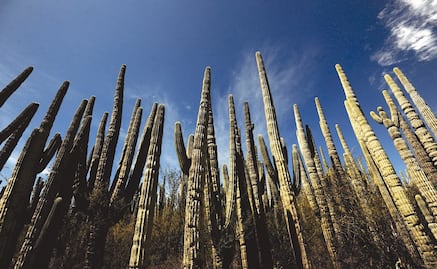Más Información

Incendian unidad de transporte público de la Ruta 95 en Otumba; caso revive temor del gremio a inseguridad y extorsiones

Liberan a joven detenido en Morelia durante manifestación para exigir justicia por asesinato de Carlos Manzo; denuncian tortura

PVEM propone cárcel a quienes gasten, sin consentimiento, Pensión del Bienestar de padres o abuelos; buscan hasta 8 años de prisión

El ganador del aumento de los aranceles de EU es México: Wall Street Journal; exportaciones mexicanas llenaron vacío que dejó China

Oposición arremete contra Max Arriaga tras dichos de la SEP; acusan intento de ideologizar educación
Mexico’s Ministry of Environment and Natural Resources (SEMARNAT)
reported that there are around 1,400 species of cacti in the world , 669 of which are Mexican and 518 are endemic .
The institution highlights the environmental benefits of cacti in biodiversity, since they serve as food, shelter, and habitat for many organisms such as rodents and bats, as well as birds, reptiles, and a large number of insects.
Certain types of cacti have even become part of the Mexican people's diet . Such is the case of the nopal and the agave , of which tequila is derived, though other species of cacti are threatened because they are extracted for illegal trade, according to information on SEMARNAT's website.
It adds, however, that cacti in Mexico are protected by the NOM-059-Semarnat-2010 regulation .
In the national territory, this group of plants is found mainly in the deserts of Chihuahua and Sonora , as well as in some valleys of Hidalgo and Querétaro , where about 60 percent of the genera in Mexico is concentrated, out of which 25% are owned by the state.
In the region of Tehuacán-Cuicatlán , which was recently included in UNESCO's World Heritage Sites list , there are at least 81 species of cacti , and 25 percent of them are endemic to the area.
According to SEMARNAT, San Luis Potosí has an even greater cacti diversity, with a record of 151 species .
dm
Noticias según tus intereses
[Publicidad]
[Publicidad]










